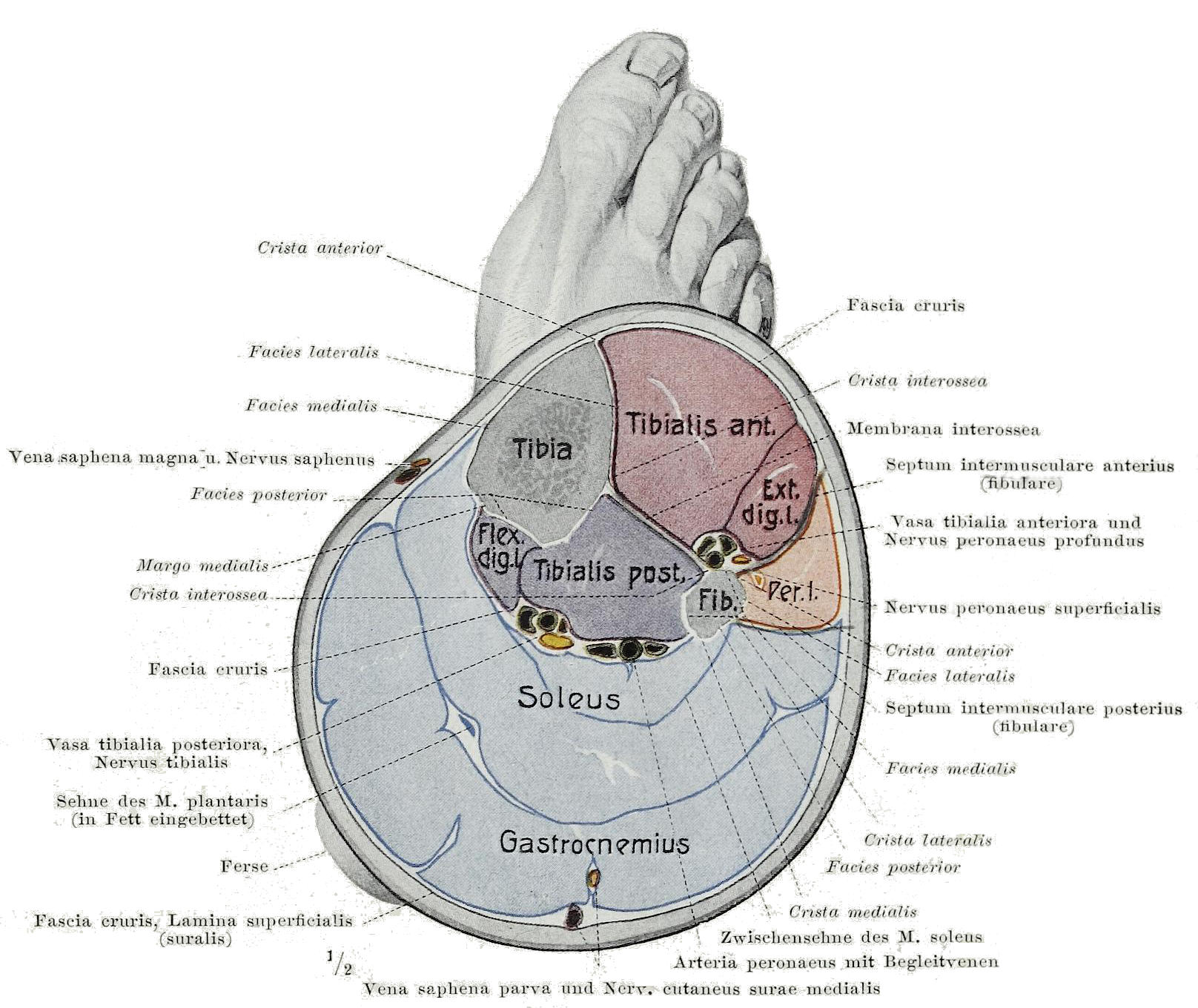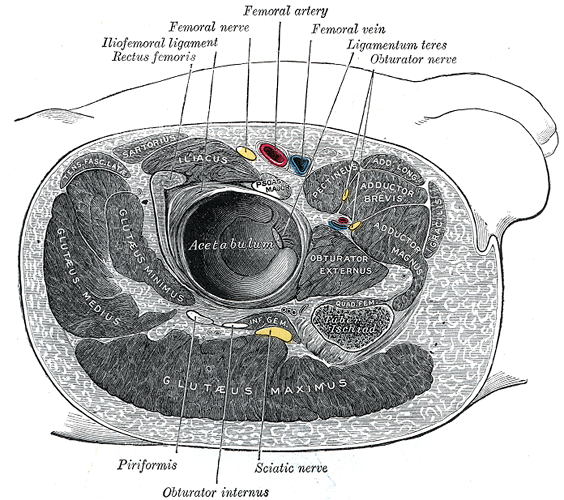Research Review: Single-Joint Extensors of the Lower Extremity Have Higher Contributions to Lower Extremity Mass Than Other Muscles
By Nicholas Rolnick SPT, MS, CSCS
Edited by Brent Brookbush DPT, PT, COMT, MS, PES, CES, CSCS, ACSM H/FS
Original Citation: Ito J. (1996). Morphological analysis of the human lower extremity based on the relative muscle weight. Okajimas Folia Anat. Jpn. 73(5): 247-252. - ABSTRACT

By Braus, Hermann - Anatomie des Menschen: ein Lehrbuch für Studierende und Ärzte, Public Domain, https://commons.wikimedia.org/w/index.php?curid=29934112
Why is this relevant?: Human ambulation is bipedal (with two limbs), involving the complex interactions of numerous muscles working in tandem to aid in forward progression of the body. Evolutionary development of bipedalism from quadrupedalism observed in monkeys has led to numerous musculoskeletal adaptations of the lower extremity. The current study utilized a dissection method in an effort to investigate the relative weight of the major muscles within the lower extremity. The purpose of the study was to speculate the differences between human and monkey locomotion based on relative muscle weight, and to identify important inter-relationships between groups at the different joints (hip, knee, and ankle) of the lower extremity.
Study Summary
| Study Design | Cadaveric Dissection Study |
| Level of Evidence | Level 4: Observational Study Without Controls |
| Subject Demographics |
|
| Outcome Measures |
|
| Results |
Weight by Percentage of the Lower Extremity:
Percentage of Lower Extremity Weight of Functional Muscle Groups by Each Joint:
Largest Muscle by Weight Percentage in the Lower Extremity
Smallest Muscle by Weight Percentage in the Lower Extremity
Largest Muscle by Weight Percentage by Joint
Functional Indices for The Lower Extremity (Ratio by Weight Percentage of Specified Muscles)
|
| Conclusions | Extensors of the lower extremity (Gluteus Maximus, Adductor Magnus, Vastus Lateralis, and Soleus) are the largest by relative weight and have the largest weight by muscle. |
| Conclusions of the Researchers | Single joint extensor muscles play a larger roles in human locomotion; whereas, two-joint muscles play a larger role in quadrupedism. Gluteus Maximus is specialized to produce large hip extension forces during locomotion. The Vasti muscles are specialized to produce large knee extensor forces during locomotion. The Soleus muscle is specialized in its morphology to produce extensor force at the ankle during locomotion. |

By Henry Vandyke Carter - Henry Gray (1918) Anatomy of the Human Body (See "Book" section below)Bartleby.com: Gray's Anatomy, Plate 344, Public Domain, https://commons.wikimedia.org/w/index.php?curid=108263
Review & Commentary:
The current study exhibited a strong, yet simple methodology for addressing the goals of the study. The authors dissected 22 legs from 11 healthy Japanese cadavers, ranging from 50-91 years old, with a relatively even cohort of males (6) and females (5). The methodology was easy to follow, allowing for reproducibility in future studies. The objective nature of the data allows for comparisons to be made across the different joints and muscle groups of the human lower extremity. These comparisons between muscles and between muscle groups highlight the potential roles each play in human bipedal gait and the ability to generate torque. Further, the results were used to compare a similar data set on the muscle weights of the lower extremity of monkeys, providing some inference to the adaptations and evolution of bipedalism in humans. Specifically, single joint extensor muscles such as the gluteus maximus , vastus lateralis , and soleus play a larger role in human locomotion, and have adapted to the larger role in propulsion with increased mass. In contrast, two-joint muscles (such as the biceps femoris ) play a larger role in monkeys. Looking at the ratios in the results chart, illustrates the comparison between human and monkey adaptations with respect to the extensor complex. Humans have much larger extensor/flexor ratios than monkeys (on the order of almost 6:1 for Gluteus Maximus /Iliopsoas ) whereas monkey's display smaller ratios, save the reversed and much larger ratio between the flexors and extensors of the toes.
The study also had limitations. One weakness was a lack of definitive exclusion criteria; however, the authors did note that the subjects included in the study appeared to have no known neuromuscular diseases that would have affected the mass of the muscles selected. Second, the cadaver samples were Japanese individuals, so results could vary with race and/or ethnicity. Caution must be made in extrapolating results to other demographics. Finally, pennation angles were not measured which may add additional information on the individual contractile and force-generating properties of each of the muscles investigated.
Why is this study important?
The current study implied that the single joint extensor muscles of the lower extremity are more important to human locomotion as they are the largest by mass and percentage of weight in the lower extremity. This may have further implications relative to functional tasks, including lifting and sport.
How does it affect practice?
It has been shown that an increase in fat-free mass, may also increases in basal metabolic rate (1). The current study indicates that the single-joint extensor muscles of the lower extremity have the highest mass, and the extensor complex as a whole composes a large percentage of the weight of the lower limbs (37.7%, 63.3%, and 76.3% at the hip, knee, and ankle, respectively). Weightlifting activities have been shown to have beneficial effects on fat-free mass and is a component considered when determining the level of activity in BMR calculations (2). Based on the current study, it can be speculated that a training bias toward multi-joint, extension-based exercises may provide additional benefits over flexion-based exercised due to increase in muscle mass, and caloric expenditure during activity.
Relative to prioritizing goals for performance, again a bias toward extension based exercise may be more beneficial due to the size and capacity of the extensor muscles and their role in propulsion. For example, running, jumping, cutting, as well as stopping and landing are all dependent on strong concentric and eccentric force generation from large single joint extensors.
Last, special attention should be paid to those large extensors with a propensity toward under-activity, specifically the gluteus maximu s and quadriceps . It is interesting to note that the common tendency in the lower extremity is synergistic dominance of the multi-joint extensors (biceps femoris , gastrocnemius ) which play a larger role in quadrupedal movement. Could it be that compensatory patterns are hard-wired vestigial movement patterns?
How does it relate to Brookbush Institute Content?
Relative to resistance training, the Brookbush Institute recommends primarily extension based exercise for the lower extremity to preferentially recruit the large muscles of locomotion/propulsion. Relative to movement prep and rehabilitation, special attention is paid to those large muscles with a propensity toward under-activity (gluteus maximus , quadriceps ) to optimize motion.
Two Examples of Exercises Incorporating the Large Single Joint Extensors:
The Anterior-Posterior Deadlift recruits the entire lower extremity extensor musculature, while placing an additional emphasis on gluteus maximus by means of posteriorly directed force. The synergistic actions of these muscles and emphasis on the largest of the extensor musculature (gluteus maximus ), increases the systemic demand of the exercise, and reinforces proper movement patterns (proper hip extension recruitment and lumbopelvic stability). Note: the hamstrings did not contribute significant weight to the human lower extremity in this study, and should likely not be the focus of the deadlift. The exercise can be progressed to include single-leg variations and destabilizing the surface to increase demands on the stabilization systems .
The squat-to-row recruits many of the heaviest muscles of not only the lower extremity, but the upper extremity as well (latissimus dorsi and trapezius ). This exercise is prescribed by the Brookbush Institute to enhance recruitment of the posterior oblique subsystem (POS) , increase "integrated pulling" strength, and may be beneficial in hypertrophy and weight loss programs due to the large amount of muscle mass recruited.
For more information regarding "activation" of the gluteus maximus and quadriceps:
The following videos depict the initial exercises described above as well as 1-2 of their progressions.
Brookbush Institute Videos
Deadlift with Anterior to Posterior Pull
Single Leg Deadlift with Anterior to Posterior Pull (Integrated Exercise Progressions included in this video)
Squat to Row - Posterior Oblique Subsystem Integration
Step Up to Row
Bibliography:
- Johnstone et al. (2005). Factors influencing variation in basal metabolic rate include fat-free mass, fat mass, age, and circulating thyroxine but not sex, circulating leptin, or triiodothyronine. American J. Clin. Nutr. 82:941-948.
- Weinheimer EM, Sands LP. Campbell WW. (2010). A systematic review of the separate and combined effects of energy restriction and exercise on fat-free mass in middle-aged and older adults: implications for sarcopenic obesity.Nutrition Reviews. 68(7):375–388
© 2016 Brent Brookbush
Questions, comments, and criticisms are welcomed and encouraged -


